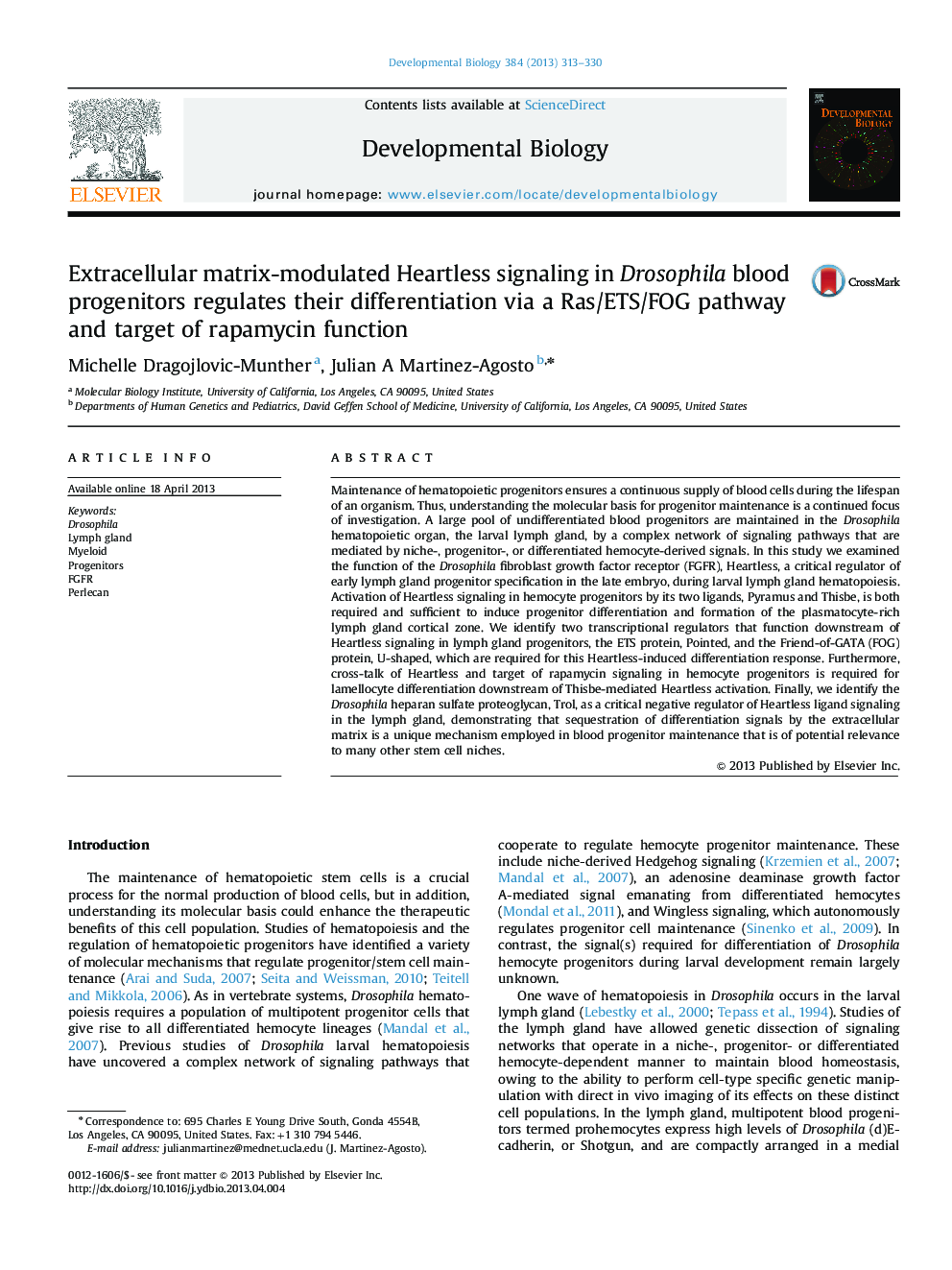| Article ID | Journal | Published Year | Pages | File Type |
|---|---|---|---|---|
| 2173023 | Developmental Biology | 2013 | 18 Pages |
•Levels of Heartless activation in blood progenitors regulates their differentiation.•Heartless activation is modulated by extracellular matrix proteoglycans.•Heartless-mediated differentiation of blood progenitors requires ETS and FOG factors.•Thisbe-mediated lamellocyte differentiation is mediated by TORC1 and 4EBP.
Maintenance of hematopoietic progenitors ensures a continuous supply of blood cells during the lifespan of an organism. Thus, understanding the molecular basis for progenitor maintenance is a continued focus of investigation. A large pool of undifferentiated blood progenitors are maintained in the Drosophila hematopoietic organ, the larval lymph gland, by a complex network of signaling pathways that are mediated by niche-, progenitor-, or differentiated hemocyte-derived signals. In this study we examined the function of the Drosophila fibroblast growth factor receptor (FGFR), Heartless, a critical regulator of early lymph gland progenitor specification in the late embryo, during larval lymph gland hematopoiesis. Activation of Heartless signaling in hemocyte progenitors by its two ligands, Pyramus and Thisbe, is both required and sufficient to induce progenitor differentiation and formation of the plasmatocyte-rich lymph gland cortical zone. We identify two transcriptional regulators that function downstream of Heartless signaling in lymph gland progenitors, the ETS protein, Pointed, and the Friend-of-GATA (FOG) protein, U-shaped, which are required for this Heartless-induced differentiation response. Furthermore, cross-talk of Heartless and target of rapamycin signaling in hemocyte progenitors is required for lamellocyte differentiation downstream of Thisbe-mediated Heartless activation. Finally, we identify the Drosophila heparan sulfate proteoglycan, Trol, as a critical negative regulator of Heartless ligand signaling in the lymph gland, demonstrating that sequestration of differentiation signals by the extracellular matrix is a unique mechanism employed in blood progenitor maintenance that is of potential relevance to many other stem cell niches.
Graphical abstractFigure optionsDownload full-size imageDownload high-quality image (123 K)Download as PowerPoint slide
